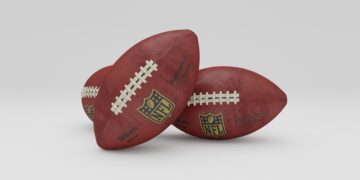Selling a car can be both a practical and emotional decision. Whether you’re upgrading to a newer model, downsizing to save money, or simply trying to stay financially afloat during challenging economic times, it’s important to approach the process with a strategic mindset. Car resales – both through trade-ins and private deals – have become increasingly common, with used car lots popping up along major roads and online marketplaces offering convenient selling platforms. However, one factor remains constant: the final resale value often depends on how well your vehicle has been maintained and presented.
1. Lights
One of the first things buyers examine is the condition of a car’s lights. Every light on your vehicle should be fully operational, including headlights, taillights, hazard lights, and reverse lights. Even small issues, such as a burnt-out bulb, can lead to unnecessary buyer concerns. To ensure your vehicle meets safety standards and makes a positive impression, check all lights and replace any faulty bulbs. If you face more complex problems, it is wise to consult a professional mechanic who can diagnose and repair the issue properly.
2. Fluids
The fluid levels in your car tell a lot about how well it has been maintained. Buyers expect a vehicle that is ready to drive without immediate maintenance concerns. It is essential to top up all vital fluid reservoirs, such as engine oil, brake fluid, and windshield washer fluid, before putting your car on the market. Not only does this proactive step improve the vehicle’s performance and safety, but it also signals to potential buyers that the car has been well cared for. In addition, consider obtaining a recent service history or inspection report to reassure buyers further.
3. Check for cracks
Cracks and chips, whether on the windows, body panels, or even windshield wipers, can give the impression that the vehicle has been neglected. These flaws can tarnish the car’s appearance and lower its resale value. A professional evaluation, preferably by an auto body shop, can help identify areas that need repair. By addressing cracks in the glass and body, you enhance the vehicle’s aesthetic appeal and longevity. Even minor cosmetic improvements can contribute significantly toward boosting buyer confidence.
4. Tyres
The condition of your tyres is another critical factor for evaluating a car’s overall value. Potential buyers will check the tread depth and inspect the tyres for cracks or other signs of aging. Tyres with shallow tread or visible damage might necessitate expensive replacements or repairs. One budget-friendly solution is tyre retreading, which can be more cost-effective and environmentally sustainable than purchasing a new set. However, if tyres are severely damaged or unsafe, replacing them entirely is the best course of action to maintain your car’s safety and appeal.
5. Seats
The interior condition of your car, particularly the seats and upholstery, plays a crucial role in its perceived value. Over time, normal wear and tear, exposure to heat, and accumulated dust can leave seats looking tattered or worn. A well-kept interior suggests that the vehicle has been cared for by its previous owner. Consider hiring a professional detailer to clean and repair the upholstery. Addressing minor tears or stains will not only refresh the car’s appearance but will also help convince potential buyers that your vehicle is worth a premium price.
6. Electric equipment
Modern vehicles are equipped with a variety of electrical systems that contribute to comfort, convenience, and safety. Faults ranging from a malfunctioning radio to more serious issues like a blown fuse can be off-putting to buyers. Even relatively minor electrical issues may lead buyers to question the overall reliability of the car. Consult your owner’s manual for instructions on replacing fuses, but if you suspect wiring issues or more significant faults, do not hesitate to have your vehicle inspected by a professional. A thorough check of the electrical system helps to eliminate safety hazards and ensures that the car remains reliable and functional.
7. Dashboard warning lights
Dashboard warning lights are an important indicator of your vehicle’s internal health. When these lights are illuminated, they can signal to potential buyers that something might be amiss with the engine or other critical systems. Familiarize yourself with the color-coded warning system: red lights indicate an urgent need to stop and address an issue, yellow lights suggest that attention is required soon, and green lights typically serve as informational indicators. Using your owner’s manual or online resources, diagnose and resolve any problems related to dashboard warning lights. A clear dashboard not only reassures buyers but also confirms that the engine and other systems are in proper working order.
Conclusion
While mileage, age, and brand reputation play major roles in determining a car’s value, many sellers overlook the impact of smaller, fixable issues. These seemingly minor details – like worn-out tyres, cracked windshields, faulty lights, or dirty interiors – can significantly reduce your car’s resale value or even drive away potential buyers altogether. The good news is that many of these problems are easy and affordable to address before listing your vehicle on the market. By taking a little time to address these issues in advance, you can present your car in the best possible light and boost your chances of getting a better deal.

































































































































































































